Iron smelting was one of the most important skills held by ancient civilizations, and efforts to restore such methods are currently underway in Chungcheongbuk-do (North Chungcheong Province). On May 27 and 28, the Jungwon National Research Institute of Cultural Heritage conducted its second set of trials in an effort to research ancient steel-making methods, in Chungju, the provincial capital. Chungju used to be one of Korea’s three major iron ore producing regions and archeological steel-making sites can be found there to this day.
Unlike the institute's first try last year with pure iron ore, the raw material this year had other additives to help the process. The outcome of these two experiments will be studied and compared with each other, and also with the archeological remains found in ancient steel relics.
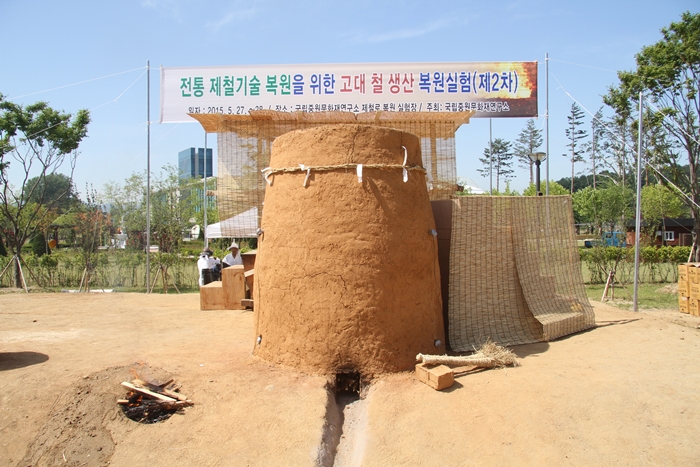
A life-size replica of a bloomery is derived from a steel-making archeological site in Seokjang-ri in Jincheon, Chungcheongbuk-do.
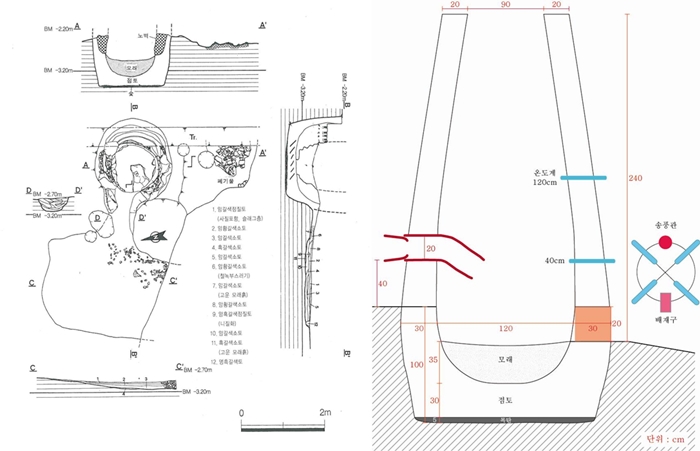
There are detailed diagrams of the archeological site in Seokjang-ri where it is believed ancient people made steel (left). A diagram shows how a clay replica can be used as part of the project (right).
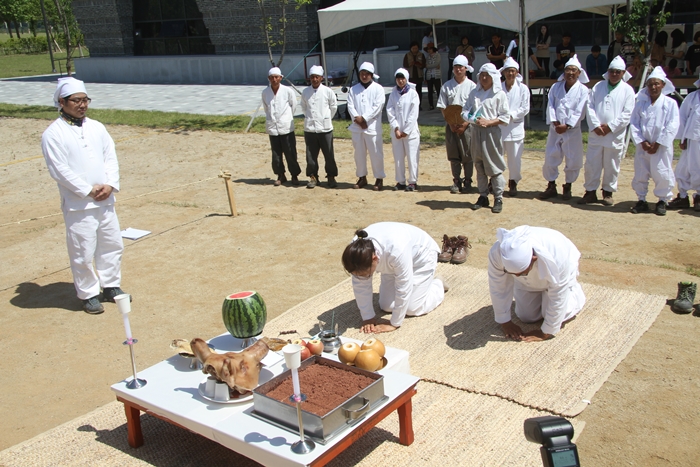
Before the trial begins, participants bow and pay their respects during a gosa, the shamanistic ritual wishing for success, on May 27.
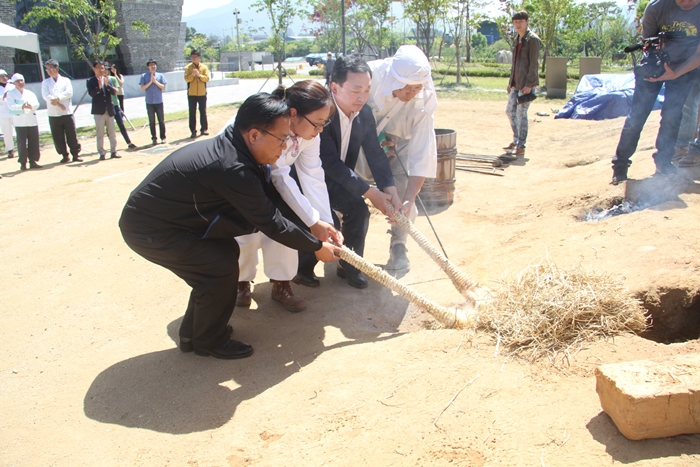
Officials light the bloomery’s fuel on May 27.
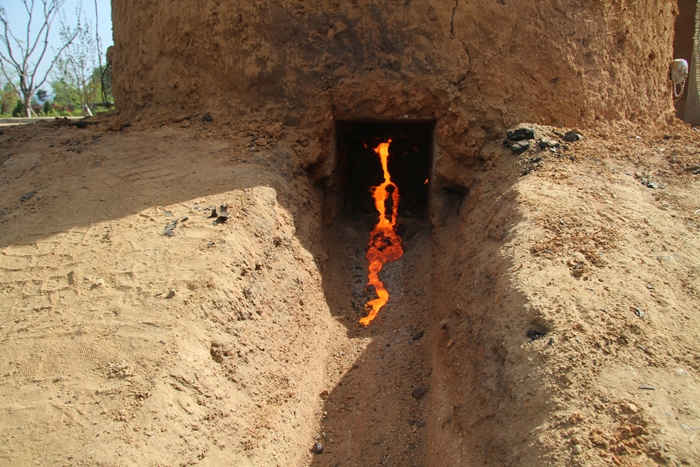
Molten steel trickles downward during the reenactment of ancient steel-making techniques held on May 27.
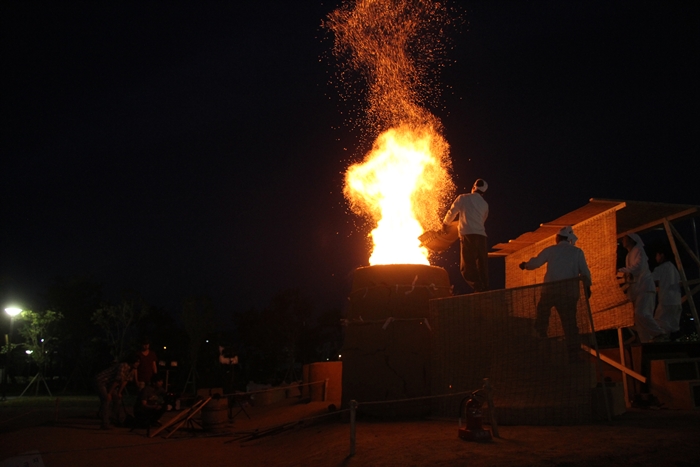
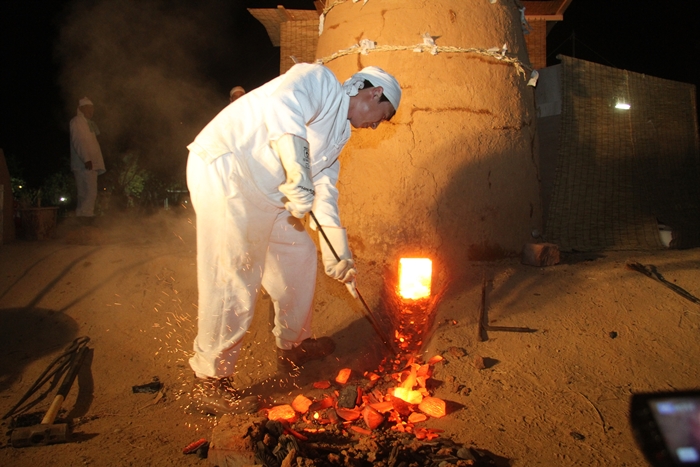
Starting on May 27, the reenactment of ancient steel-making continues late into the night.
After this experiment is complete, researchers will have genuine ancient-style steel on hand and will have learned more about the way in which ancient civilizations used traditional bloomeries with bamboo reinforcements and hand-crafter ventilation ducts. The bloomery is a life-sized replica derived from archeological sites in Seokjang-ri in Jincheon, Chungcheongbuk-do. The institute ran trials in April to determine the appropriate ratio between iron ore and other additives.
Research results will help archeologists learn more about ancient steel manufacturing and how to properly restore many of the nation's historical artifacts.
By Paik Hyun
Korea.net Staff Writer
Photos: Jungwon National Research Institute of Cultural Heritage
cathy@korea.kr